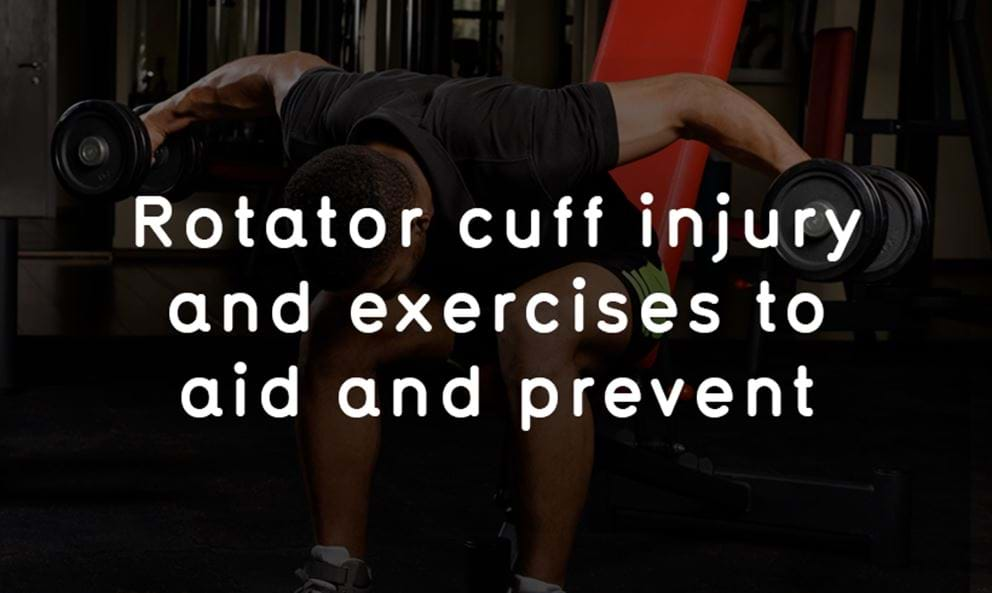Rotator Cuff Injury and Exercises to Aid and Prevent

The rotator cuff is one of those things which the gym goers of the world often become aware of only when disaster strikes and an injury exiles them, maybe screaming, from the weight room.
In a panic, our wounded lifter will quickly absorb all the information they can find about this obscure biological feature, so as to get on the fast-track to recovery and return to smashing PRs as fast as humanly possible.
But what if I told you that paying attention to your rotator cuff health on a daily basis will not only help to keep you injury free but will also go a long way to turning you into a musclebound powerhouse who moves effortlessly through strength plateaus?
When’s It Used?
The phrase “rotator cuff” often seems to summon up visions of a microscopic, delicate muscle buried somewhere deep in the shoulder, just waiting to be knocked the wrong way and malfunction violently.
In reality, the rotator cuff is a large network of four muscles (the infraspinatus, supraspinatus, subscapularis and teres minor, if you were wondering) which unite to hold your shoulder in its joint and allow your arm to not only rotate, but move in general.
The bottom line is that your rotator cuff comes into play in every single shoulder movement you perform.
How Do You Give It a Workout?
The rotator cuff can be injured from overtraining, not training enough, lifting with bad form, or trying to lift more than you can handle.
By the same token, almost anything which is good for your upper body as a whole is good for your rotator cuff specifically. Any well-executed exercise which strengthens the shoulder will have an effect on strengthening the rotator cuff. This ranges from the classic military press to doing dumbbell chest presses on a Bosu ball.
The key is in that phrase “well-executed”.
You need to use correct form – Don’t be shy, use the gym mirrors, record yourself, or get an experienced lifter to spot for you and let you know how you’re doing.
You need to lift weights you can handle – Ego-lifts are dangerous. You won’t build strength or size while you’re injured. Even testing your one rep maxes should be done sparingly. Humble yourself and stick to weights which you can handle.
You need to train enough – Stop skipping workouts for no good reason.
… But not too much – Stick to your scheduled rest days and take some more time off if you feel your body genuinely complaining.
Yeah, But How Do You Really Target It?
Other than those magnificent tips above, there are several useful accessory exercises you can do to target your rotator cuff muscles.
Internal and external rotations – Take hold of a light dumbbell and let your arm rest flat at your side. Bend your forearm at a 90-degree angle, and then rotate your arm away from your body (for the external rotation) and towards your body (for the internal rotation). Keep your upper arm by your side.
Front raise – This is a classic bodybuilding exercise used to strengthen the front (anterior) deltoid muscle and which also has a positive effect on the rotator cuff. Take hold of a dumbbell, let your arm rest at your side, and then raise your arm directly in front of you in a straight line without bending the elbow, until it’s just past a 90-degree angle to the floor.
Side lateral raise – Like the front raise, this is a bread and butter bodybuilding workout. It works the side (lateral) deltoid muscle and also benefits the rotator cuff. Take hold of a dumbbell, let your arm rest at your side, and then extend your arm out to your side in a straight line, with the elbow either bent or straight as you prefer. Continue the motion until your arm is at about a 90-degree angle to the floor.


